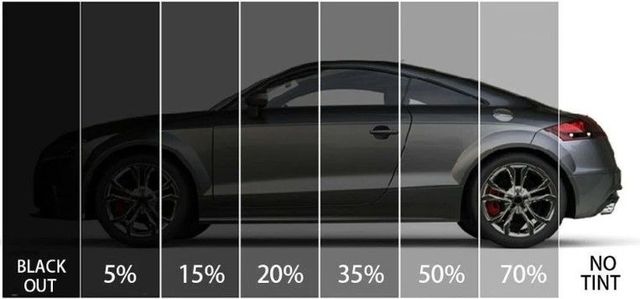Discover the Perks of UV Defense with Vehicle Window Tinting
Discover the Perks of UV Defense with Vehicle Window Tinting
Blog Article
Home Window Tinting Laws and Standards: What You Need to Know Before Tinting Your Automobile
Prior to continuing with home window tinting for your automobile, it is important to acquaint on your own with the diverse laws and guidelines that regulate this technique throughout different states. These guidelines dictate the permissible degrees of color darkness, typically gauged by visible light transmission (VLT) portions, and include specific terms for front windshields intended at ensuring roadway safety. Furthermore, certain territories might offer clinical exceptions for individuals with certifying conditions. Understanding these complexities can conserve you from prospective lawful ramifications, but what are the details regulations in your state?
Introduction of Home Window Tinting Regulations
Window tinting laws are regularly based on variation throughout different jurisdictions, reflecting neighborhood policies and security considerations. These regulations dictate the permissible levels of color darkness and reflectiveness on automobile home windows, guaranteeing that vehicle drivers maintain adequate presence while additionally shielding against dangerous UV rays and warm.
Many policies categorize home window tinting based on the Visible Light Transmission (VLT) percent, which indicates the quantity of light that can pass with the window. Usually, reduced VLT percents symbolize darker colors. Legislations frequently differentiate between the front, side, and rear windows, with stricter restrictions related to the front windshield to enhance safety for both the vehicle driver and various other road customers.
Furthermore, some territories enforce constraints on the reflectivity of the color, protecting against excessive glare that might harm visibility. Exceptions to these regulations might exist for individuals with details medical conditions calling for additional sun defense. Conformity with window tinting guidelines is critical, as offenses can result in fines, obligatory elimination of the color, and potential rises in insurance premiums. As a result, it is essential for vehicle proprietors to acquaint themselves with neighborhood regulations prior to waging home window tinting installations.
State-by-State Tint Regulations
Recognizing the specific home window tinting laws in each state is important for lorry proprietors looking for to abide with the regulation. Each state in the U.S. has actually established its own collection of guidelines controling window tinting, which can vary dramatically. These policies commonly determine the permitted levels of color darkness, the kinds of windows that can be tinted, and any medical exceptions that might use.
For circumstances, states like California have strict limitations on color darkness for front windows, while others, such as New Mexico, might permit darker tints. Furthermore, certain states mandate details presence portions for different home windows, including the windshield, front side windows, and rear home windows. It is vital for cars and truck owners to familiarize themselves with their state's laws to stay clear of prospective fines or penalties.
Furthermore, some states might call for a qualification sticker to be positioned on tinted home windows, indicating conformity with state regulations. Failing to follow these regulations not just runs the risk of legal effects however can also influence safety and exposure while driving. Consequently, lorry owners should perform complete study or speak with regional authorities to make sure full understanding and conformity with state-by-state tint laws.
Allowed Tint Kinds and degrees
Several vehicle proprietors may be shocked to learn that enabled tint have a peek at this site degrees and types differ commonly across various states. Each state has actually developed its very own regulations concerning the permitted darkness and reflectivity of window color, usually measured by Visible Light Transmission (VLT) percentages. VLT refers to the quantity of light that can travel through the colored home windows; therefore, a lower percentage indicates a darker tint.

Additionally, the kinds of tint materials permitted can vary, with some states prohibiting metallic or mirror-like look at this now surfaces. It is necessary for automobile owners to familiarize themselves with their state's specific legislations to ensure compliance. Non-compliance can cause penalties, necessary removal of the tint, or other lawful effects, making it important to understand these guidelines prior to waging installation.
Medical Exemptions for Tinting
While not all states offer allocations for medical exemptions concerning window tinting, those that do identify the necessity for specific individuals to boost visibility and convenience because of clinical conditions. Numerous clinical problems, such as lupus, skin cancer cells, and particular eye problems, can render people especially conscious sunlight. These people might require darker tints to shield themselves from harmful UV rays and glow.

It is very important to note that also with a medical exemption, there might still be constraints on the degree of tint enabled. Compliance with state laws makes certain that people are both secured and within lawful limits. Those considering clinical exemptions need to contact their regional Department of Motor Cars or equivalent authority to recognize the requirements and procedures essential to get an exemption effectively.
Fines for Non-Compliance
Stopping working to follow window tinting legislations can cause significant penalties, which vary by state. Police are empowered to issue citations for cars that do not stick to the specified tinting laws. These charges typically consist of fines, which can range from small quantities to several hundred dollars, depending on the seriousness of the offense and the state in question.
In some territories, duplicated offenses may cause rising penalties or extra penalties, such as mandatory court looks. Furthermore, non-compliance may require the removal of unlawful tinting, frequently at the proprietor's expenditure. In severe instances, regular culprits may deal with suspension of their lorry enrollment till conformity is accomplished.
Furthermore, insurance ramifications may occur from getting multiple citations for home window color violations. Insurers may view such violations as an indication of riskier actions, potentially bring about boosted premiums or difficulty in coverage.
To avoid these penalties, it is vital for automobile proprietors to familiarize themselves with their local This Site window tinting legislations and guarantee that their automobile complies (Window Tinting). This proactive approach not only stays clear of lawful implications yet also promotes road security
Final Thought

Most policies identify window tinting based on the Visible Light Transmission (VLT) percent, which suggests the amount of light that can pass through the window. Compliance with home window tinting guidelines is vital, as violations can result in fines, required elimination of the tint, and prospective rises in insurance costs.Recognizing the specific home window tinting laws in each state is crucial for automobile proprietors looking for to conform with the regulation. These laws often determine the allowable levels of tint darkness, the kinds of windows that can be tinted, and any type of medical exemptions that might use.
For instance, states like California have strict restrictions on color darkness for front home windows, while others, such as New Mexico, might permit darker colors.
Report this page